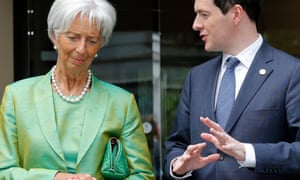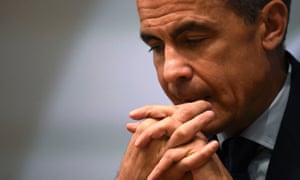'People will forgive you for being wrong, but they will never forgive you for being right - especially if events prove you right while proving them wrong.' Thomas Sowell
Search This Blog
Wednesday, 22 May 2024
Wednesday, 19 July 2023
A Level Economics 34: Understanding Market Structures
Number of Firms: The number of firms in a market refers to the total count of independent businesses competing with each other to sell similar or substitute goods or services. The number of firms influences the level of competition and market concentration, which, in turn, affects market structure. Market structures can range from a monopoly (one firm) to perfect competition (many firms).
Example: A market with only one telecommunications company providing phone services would be a monopoly. In contrast, a market with multiple telecommunications companies competing with each other would reflect a more competitive market structure, such as oligopoly or perfect competition.
Contestability (Ability to Enter and Exit Markets Freely):Contestability refers to the ease with which new firms can enter a market and compete with existing firms, as well as the freedom for existing firms to exit the market without significant barriers or impediments. The degree of contestability affects the potential for new entry and the level of competition within a market.
Example: In a market with low barriers to entry and exit, such as the smartphone app development industry, new firms can easily enter the market and offer their apps. If these firms can compete effectively with existing app developers, it indicates high contestability and a more competitive market structure.
The Relationship:The number of firms and contestability are interrelated and jointly determine the structure of a market. When there are a large number of firms and low barriers to entry and exit, it promotes competition and leads to more competitive market structures, such as perfect competition or monopolistic competition.
In contrast, when there are a small number of firms and high barriers to entry and exit, it restricts competition and can result in more concentrated market structures, such as oligopoly or monopoly.
Example: Consider the market for coffee shops in a particular city. If there are numerous coffee shops, and new coffee shops can enter the market easily and compete with existing ones, it indicates a highly contestable market with many firms. This scenario would align with a competitive market structure, such as perfect competition or monopolistic competition.
However, if there are only a few dominant coffee shop chains and significant barriers to entry, such as high startup costs or exclusive lease agreements, the market would have low contestability. This would result in a less competitive market structure, such as an oligopoly or even a monopoly if one chain has a dominant market position.
In summary, the structure of a market depends on the number of firms operating within it and their ability to enter and exit the market freely. The presence of many firms and high contestability leads to more competitive market structures, while fewer firms and low contestability can result in concentrated market structures with less competition.
Key Terms:
Barriers to Entry: Barriers to entry are obstacles or restrictions that prevent new firms from entering a market and competing with existing firms. These barriers can be both structural and behavioral in nature.
Structural Barriers to Entry: Structural barriers to entry refer to inherent characteristics of a market that make it difficult or costly for new firms to enter and establish themselves. These barriers are typically long-term and relate to the market's fundamental structure.
Behavioral Barriers to Entry: Behavioral barriers to entry arise from the actions of existing firms in a market to discourage or limit new entrants. These barriers are often strategic and can be influenced by the actions of dominant players in the market.
Examples and Distinction:
- Structural Barriers to Entry:
a. Economies of Scale: When existing firms in a market benefit from economies of scale, new entrants may find it challenging to match the cost efficiency of established firms. As production increases, the average cost per unit decreases, providing a competitive advantage to larger companies. This discourages new firms from entering and competing with economies of scale.
Example: In the automobile manufacturing industry, large carmakers enjoy economies of scale due to their established production facilities, distribution networks, and purchasing power. New entrants face difficulty achieving similar cost efficiencies, making it a structural barrier to entry.
b. High Capital Requirements: Some markets require substantial upfront investments in machinery, technology, or infrastructure to compete effectively. High capital requirements act as a deterrent for new entrants, limiting their ability to enter the market.
Example: The airline industry demands significant capital investment to purchase aircraft and establish routes. This high capital requirement makes it difficult for new airlines to enter the market and compete with established carriers.
c. Access to Distribution Channels: In certain markets, established firms may control critical distribution channels, making it difficult for new entrants to reach customers effectively. Without access to established distribution networks, new firms may struggle to gain market share.
Example: In the retail industry, large supermarket chains control established distribution networks, making it challenging for new grocery stores to enter the market and compete for shelf space and customer visibility.
- Behavioral Barriers to Entry:
a. Predatory Pricing: Dominant firms may engage in predatory pricing, intentionally setting prices below cost to drive out new entrants. Once competitors are forced out, the dominant firm can then raise prices and regain its market power.
Example: A large software company offering its products at unprofitably low prices to deter new software startups from entering the market is an example of predatory pricing.
b. Brand Loyalty: Established firms often build strong brand loyalty and customer trust over time. This creates a barrier for new entrants as customers may be hesitant to switch to an unknown brand.
Example: Tech-savvy consumers' strong brand loyalty to smartphones may deter new smartphone manufacturers from entering the market, even if they offer innovative features.
c. Exclusive Contracts: Existing firms may enter into exclusive contracts with suppliers or distributors, preventing new entrants from accessing essential resources or distribution channels.
Example: A dominant beverage company entering into exclusive contracts with popular restaurants and convenience stores may limit the ability of new beverage companies to access these sales channels.
In summary, barriers to entry can be both structural and behavioral. Structural barriers stem from inherent market characteristics, such as economies of scale and high capital requirements. Behavioral barriers, on the other hand, result from strategic actions taken by existing firms to discourage or limit new entrants, such as predatory pricing and brand loyalty. Understanding these distinctions helps identify the challenges new firms face in entering competitive markets.
Regulators play a crucial role in influencing the degree of contestability in a market by implementing policies and regulations that either promote or hinder competition. Here are several ways regulators can affect contestability in a market, along with examples:
Barriers to Entry and Exit:
- Regulators can influence the ease with which new firms can enter a market by setting entry requirements, licensing, or imposing restrictions on potential entrants.
- They can also impact the ability of firms to exit the market by imposing exit fees, liquidation costs, or other legal barriers.
Example: In the telecommunications industry, regulators can grant or deny licenses to new companies seeking to provide services. If regulators make it easy for new firms to obtain licenses and enter the market, it encourages greater contestability and competition among telecommunications providers.
Anti-Competitive Practices:
- Regulators can enforce antitrust laws to prevent anti-competitive practices, such as price-fixing, collusion, or predatory pricing, which can restrict competition and limit contestability in a market.
Example: In the airline industry, regulators can investigate and take action against airlines engaging in collusion to fix ticket prices. By curbing such anti-competitive practices, regulators ensure a more competitive market that benefits consumers with lower fares and increased choices.
Merger and Acquisition Approval:
- Regulators can assess and approve or reject mergers and acquisitions based on their potential impact on competition and contestability in the market.
- They may require divestitures or impose conditions to ensure that the merged entity does not gain undue market power that could harm competition.
Example: When two pharmaceutical companies propose a merger, regulators may scrutinize the deal to assess its potential effects on competition in the pharmaceutical industry. If the merger is deemed to reduce competition and contestability, regulators may impose conditions or reject the merger to maintain a competitive market.
Price Regulation:
- Regulators can set price caps or price floors to prevent firms from exploiting their market power and to promote a competitive environment.
- Price regulation can prevent monopolistic practices and ensure that consumers have access to reasonably priced goods and services.
Example: In the electricity market, regulators can impose price ceilings to limit the prices charged by power generation companies. This prevents firms from exploiting their dominant position and promotes contestability in the electricity market, allowing new entrants to compete.
Access to Essential Facilities:
- Regulators can ensure that essential facilities or infrastructure, such as transportation networks or communication networks, are accessible to all firms on fair and non-discriminatory terms.
- This prevents the dominant control of essential facilities by a single firm, allowing competitors to enter the market and increase contestability.
Example: In the railroad industry, regulators can mandate that rail network operators provide access to their tracks for other freight companies at fair rates. This promotes competition in the freight transportation market and enhances contestability.
In summary, regulators can significantly influence the degree of contestability in a market through various policies, regulations, and enforcement actions. By promoting fair competition, preventing anti-competitive practices, and ensuring access to essential facilities, regulators contribute to creating more competitive and contestable markets that benefit consumers and promote innovation.
Thursday, 23 June 2022
Thursday, 2 June 2016
You’re witnessing the death of neoliberalism – from within
IMF economists have published a remarkable paper admitting that the ideology was oversold
What does it look like when an ideology dies? As with most things, fiction can be the best guide. In Red Plenty, his magnificent novel-cum-history of the Soviet Union, Francis Spufford charts how the communist dream of building a better, fairer society fell apart.
Even while they censored their citizens’ very thoughts, the communists dreamed big. Spufford’s hero is Leonid Kantorovich, the only Soviet ever to win a Nobel prize for economics. Rattling along on the Moscow metro, he fantasises about what plenty will bring to his impoverished fellow commuters: “The women’s clothes all turning to quilted silk, the military uniforms melting into tailored grey and silver: and faces, faces the length of the car, relaxing, losing the worry lines and the hungry looks and all the assorted toothmarks of necessity.”
But reality makes swift work of such sandcastles. The numbers are increasingly disobedient. The beautiful plans can only be realised through cheating, and the draughtsmen know it better than any dissidents. This is one of Spufford’s crucial insights: that long before any public protests, the insiders led the way in murmuring their disquiet. Whisper by whisper, memo by memo, the regime is steadily undermined from within. Its final toppling lies decades beyond the novel’s close, yet can already be spotted.
When Red Plenty was published in 2010, it was clear the ideology underpinning contemporary capitalism was failing, but not that it was dying. Yet a similar process as that described in the novel appears to be happening now, in our crisis-hit capitalism. And it is the very technocrats in charge of the system who are slowly, reluctantly admitting that it is bust.
You hear it when the Bank of England’s Mark Carney sounds the alarm about “a low-growth, low-inflation, low-interest-rate equilibrium”. Or when the Bank of International Settlements, the central bank’s central bank, warns that “the global economy seems unable to return to sustainable and balanced growth”. And you saw it most clearly last Thursday from the IMF.
What makes the fund’s intervention so remarkable is not what is being said – but who is saying it and just how bluntly. In the IMF’s flagship publication, three of its top economists have written an essay titled “Neoliberalism: Oversold?”.
The very headline delivers a jolt. For so long mainstream economists and policymakers have denied the very existence of such a thing as neoliberalism, dismissing it as an insult invented by gap-toothed malcontents who understand neither economics nor capitalism. Now here comes the IMF, describing how a “neoliberal agenda” has spread across the globe in the past 30 years. What they mean is that more and more states have remade their social and political institutions into pale copies of the market. Two British examples, suggests Will Davies – author of the Limits of Neoliberalism – would be the NHS and universities “where classrooms are being transformed into supermarkets”. In this way, the public sector is replaced by private companies, and democracy is supplanted by mere competition.
The results, the IMF researchers concede, have been terrible. Neoliberalism hasn’t delivered economic growth – it has only made a few people a lot better off. It causes epic crashes that leave behind human wreckage and cost billions to clean up, a finding with which most residents of food bank Britain would agree. And while George Osborne might justify austerity as “fixing the roof while the sun is shining”, the fund team defines it as “curbing the size of the state … another aspect of the neoliberal agenda”. And, they say, its costs “could be large – much larger than the benefit”.

IMF managing director Christine Lagarde with George Osborne. ‘Since 2008, a big gap has opened up between what the IMF thinks and what it does.’ Photograph: Kimimasa Mayama/EPA
Two things need to be borne in mind here. First, this study comes from the IMF’s research division – not from those staffers who fly into bankrupt countries, haggle over loan terms with cash-strapped governments and administer the fiscal waterboarding. Since 2008, a big gap has opened up between what the IMF thinks and what it does. Second, while the researchers go much further than fund watchers might have believed, they leave in some all-important get-out clauses. The authors even defend privatisation as leading to “more efficient provision of services” and less government spending – to which the only response must be to offer them a train ride across to Hinkley Point C.
Even so, this is a remarkable breach of the neoliberal consensus by the IMF. Inequality and the uselessness of much modern finance: such topics have become regular chew toys for economists and politicians, who prefer to treat them as aberrations from the norm. At last a major institution is going after not only the symptoms but the cause – and it is naming that cause as political. No wonder the study’s lead author says that this research wouldn’t even have been published by the fund five years ago.
From the 1980s the policymaking elite has waved away the notion that they were acting ideologically – merely doing “what works”. But you can only get away with that claim if what you’re doing is actually working. Since the crash, central bankers, politicians and TV correspondents have tried to reassure the public that this wheeze or those billions would do the trick and put the economy right again. They have riffled through every page in the textbook and beyond – bank bailouts, spending cuts, wage freezes, pumping billions into financial markets – and still growth remains anaemic.
And the longer the slump goes on, the more the public tumbles to the fact that not only has growth been feebler, but ordinary workers have enjoyed much less of its benefits. Last year the rich countries’ thinktank, the OECD, made a remarkable concession. It acknowledged that the share of UK economic growth enjoyed by workers is now at its lowest since the second world war. Even more remarkably, it said the same or worse applied to workers across the capitalist west.
Red Plenty ends with Nikita Khrushchev pacing outside his dacha, to where he has been forcibly retired. “Paradise,” he exclaims, “is a place where people want to end up, not a place they run from. What kind of socialism is that? What kind of shit is that, when you have to keep people in chains? What kind of social order? What kind of paradise?”
Economists don’t talk like novelists, more’s the pity, but what you’re witnessing amid all the graphs and technical language is the start of the long death of an ideology.
Saturday, 1 June 2013
Ministers who misuse statistics to mislead voters must pay the price

Monday, 13 February 2012
The true value of money – or why you can't fart a crashing plane back into the sky
I'm no financial expert. I scarcely know what a coin is. Ask me to explain what a credit default swap is and I'll emit an unbroken 10-minute "um" through the clueless face of a broken puppet. You might as well ask a pantomime horse. But even an idiot such as me can see that money, as a whole, doesn't really seem to be working any more.
Money is broken, and until we admit that, any attempts to fix the economy seem doomed to fail. We're like passengers on a nosediving plane thinking if we all fart hard enough, we can lift it back into the sky. So should we be storming the cockpit or hunting for parachutes instead? I don't know: I ran out of metaphor after the fart gag. You're on your own from hereon in.
Banknotes aren't worth the paper they're printed on. If they were, they'd all have identical value. Money's only worth what the City thinks it's worth. Or, perhaps more accurately, hopes it's worth. Coins should really be called "wish-discs" instead. That name alone would give a truer sense of their value than the speculative number embossed on them.
The entire economy relies on the suspension of disbelief. So does a fairy story, or an animated cartoon. This means that no matter how soberly the financial experts dress, no matter how dry their language, the economy they worship can only ever be as plausible as an episode of SpongeBob SquarePants. It's certainly nowhere near as well thought-out and executed.
No one really understands how it all works: if they did, we wouldn't be in this mess. Banking, as far as I can tell, seems to be almost as precise a science as using a slot machine. You either blindly hope for the best, delude yourself into thinking you've worked out a system, or open it up when no one's looking and rig the settings so it'll pay out illegally.
The chief difference is that slot machines are more familiar and graspable to most of us. When you hear a jackpot being paid out to a gambler, the robotic clunk-clunk-clunk of coin-on-tray, you're aware that he had to go to some kind of effort to get his reward. You know he stood there pushing buttons for hours. You can picture that.
The recent outrage over City bonuses stems from a combination of two factors: the sheer size of the numbers involved coupled with a lack of respect for the work involved in earning them. Like bankers, top footballers are massively overpaid, but at least you comprehend what they're doing for the money. If Wayne Rooney was paid millions to play lacrosse in a closed room in pitch darkness, people would begrudge him his millions far more than they already do. Instead there he is, on live television: he's skilled, no doubt about it.
Similarly, it may be tasteless when a rapper pops up on MTV wearing so much bling he might as well have dipped himself in glue and jumped into a treasure chest full of vajazzling crystals, but at least you understand how he earned it.
RBS boss Stephen Hester, meanwhile, earns more than a million pounds for performing enigmatic actions behind the scenes at a publicly owned bank. And on top of his huge wage, he was in line for a massive bonus. To most people, that's downright cheeky: like a man getting a blowjob from your spouse while asking you to make him a cup of tea.
But Hester earned his wage, we're told, because he does an incredibly difficult job. And maybe he does. Trouble is, no one outside the City understands what his job actually consists of. I find it almost impossible to picture a day in Hester's life, and I once wrote a short story about a pint-sized toy Womble that ran around killing dogs with its dick, so I know I don't lack imagination. Class, yes: imagination, no. If I strain my mind's eye, I can just about picture Hester arriving at work, picture him thanking his driver, picture the receptionist saying "Hello, Mr Hester", and picture him striding confidently into his office – but the moment the door shuts, my feed breaks up and goes fuzzy. What does he do in there? Pull levers? Chase numbers round the room with a broom? God knows.
Maybe if all bankers were forced to work in public, on the pavement, it would help us understand what they actually do. Of course, you'd have to encase them in a Perspex box so they wouldn't be attacked. In fact, if the experience of David Blaine is anything to go by, you'd have to quickly move that Perspex box to somewhere impossibly high up, where people can't pelt it with golf balls and tangerines. On top of the Gherkin, say. If Hester did his job inside a Perspex box on top of the Gherkin for a year, this entire argument might never have happened.
The row over bonuses has led some to mutter darkly about mob rule and the rise of anti-business sentiment. Complain about mobs all you like, but you can't control gut reactions, and you can't dictate the mood. And when you try to fart a crashing plane back into the sky, you only succeed in making the atmosphere unpleasant for everyone. And spoiling the in-flight movie. And making the stewardess cry. Looks like I'm all out of metaphor again. Time to end the article. Article ends.


